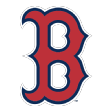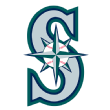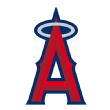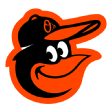Ranking all 30 MLB rotations, who's in the elite?
In 1988, starting pitchers threw 71 percent of all innings. That dropped to 68 percent in 1998, to 65 percent in 2008, and now it's down to 61 percent. There are two ways to interpret this data.
One way: Starting pitchers as we knew them are dying out. Every year, fewer guys get to 200 innings. Teams are increasingly concerned about pitchers working a third time through the order, and the Rays have made ample use of their "opener" strategy, discarding tradition. Teams aren't creating workhorses and like using relievers, so they accumulate a number of good ones.
The other way: Starting pitchers as we knew them are dying out, but they're not dead. Starters still throw the overwhelming majority of all innings, and a good starter remains more valuable than a good reliever. Various contenders are going to try to upgrade their rotations because having a good rotation is critical -- down the stretch and in the playoffs. Teams can't just lean on relievers all the time.
Rotations still matter, both for teams trying to make the playoffs and for rebuilding teams. Every team still wants to have a good starting five (or six). I've done my best to rank the current starting rotations, but this isn't just a review of how all 30 rotations have already done; it's a look ahead as well. Think of this as a projection as well as an evaluation, based mostly on analysis and a small amount on gut feelings. I am not docking teams likely to make their rotations worse through trades. They haven't made those trades yet, after all.
 1. Houston Astros: Pick a statistical category, and I'll bet it makes the Astros' rotation look outstanding. They lead all rotations in both versions of WAR. They lead all rotations in strikeout rate. They lead all rotations in innings and quality starts. Their worst starter has been Dallas Keuchel, whose ERA is a hair above 4.00. You could argue that maybe the Astros are lucky because everyone's healthy and they haven't needed to use their depth. But the strength of this rotation is ludicrous, forcing Collin McHugh and Brad Peacock to both pitch in relief.
1. Houston Astros: Pick a statistical category, and I'll bet it makes the Astros' rotation look outstanding. They lead all rotations in both versions of WAR. They lead all rotations in strikeout rate. They lead all rotations in innings and quality starts. Their worst starter has been Dallas Keuchel, whose ERA is a hair above 4.00. You could argue that maybe the Astros are lucky because everyone's healthy and they haven't needed to use their depth. But the strength of this rotation is ludicrous, forcing Collin McHugh and Brad Peacock to both pitch in relief.
 2. Cleveland Indians: It doesn't get better than Corey Kluber, and this is a unit that goes a strong four deep. The separator, to me, is that the Astros are better in the fifth slot, but now that the Indians have moved Josh Tomlin into the bullpen, they might have something in Shane Bieber, who has 20 career professional walks vs. 268 strikeouts. Until Bieber proves more, I couldn't in good conscience move the Indians up into No. 1, but second place is a good place.
2. Cleveland Indians: It doesn't get better than Corey Kluber, and this is a unit that goes a strong four deep. The separator, to me, is that the Astros are better in the fifth slot, but now that the Indians have moved Josh Tomlin into the bullpen, they might have something in Shane Bieber, who has 20 career professional walks vs. 268 strikeouts. Until Bieber proves more, I couldn't in good conscience move the Indians up into No. 1, but second place is a good place.
 3. Los Angeles Dodgers: To this point, the Dodgers have used 11 starting pitchers; only the Rays have used more because of their relief/starter shenanigans. The Dodgers' rotation has been beaten up by injuries, but it has nevertheless remained effective, and the injured pitchers will be back. Kenta Maeda and Rich Hill are already back. Clayton Kershaw, Hyun-Jin Ryu and Walker Buehler are all on the way back. And all the absences have allowed the Dodgers to rediscover Ross Stripling. So far, 116 starters have thrown at least 50 innings, and Stripling ranks third in K-BB%. Injury-related uncertainty is real, but unless the Dodgers encounter their worst-case scenario, this rotation is going to be a strength.
3. Los Angeles Dodgers: To this point, the Dodgers have used 11 starting pitchers; only the Rays have used more because of their relief/starter shenanigans. The Dodgers' rotation has been beaten up by injuries, but it has nevertheless remained effective, and the injured pitchers will be back. Kenta Maeda and Rich Hill are already back. Clayton Kershaw, Hyun-Jin Ryu and Walker Buehler are all on the way back. And all the absences have allowed the Dodgers to rediscover Ross Stripling. So far, 116 starters have thrown at least 50 innings, and Stripling ranks third in K-BB%. Injury-related uncertainty is real, but unless the Dodgers encounter their worst-case scenario, this rotation is going to be a strength.
 4. Washington Nationals: Max Scherzer ranks first in K-BB%, and it isn't close: He's in first by 5 percentage points. The gap between first place and second is the same as the gap between second place and 11th, which is to say that Scherzer has been more or less perfect. For the Nats, it gets a little iffy from there, with Stephen Strasburg on the disabled list. As useful as Gio Gonzalez and Tanner Roark can be, they aren't dominant. But there's no black hole here, and Scherzer is amazing. I'm counting on Strasburg coming back and pitching at the top of his game.
4. Washington Nationals: Max Scherzer ranks first in K-BB%, and it isn't close: He's in first by 5 percentage points. The gap between first place and second is the same as the gap between second place and 11th, which is to say that Scherzer has been more or less perfect. For the Nats, it gets a little iffy from there, with Stephen Strasburg on the disabled list. As useful as Gio Gonzalez and Tanner Roark can be, they aren't dominant. But there's no black hole here, and Scherzer is amazing. I'm counting on Strasburg coming back and pitching at the top of his game.
 5. Boston Red Sox: Chris Sale ranks first among starters in the American League in strikeout rate, Eduardo Rodriguez eighth, David Price 23rd and Rick Porcello 24th. There are questions about the fifth slot because Drew Pomeranz is down with another injury; even when he was able to pitch, he wasn't very good, so Steven Wright is starting again. That top four is legitimately strong now that Rodriguez has taken his step forward and Porcello has cut his homer rate in half. It's not just the lineup that makes the Red Sox a juggernaut.
5. Boston Red Sox: Chris Sale ranks first among starters in the American League in strikeout rate, Eduardo Rodriguez eighth, David Price 23rd and Rick Porcello 24th. There are questions about the fifth slot because Drew Pomeranz is down with another injury; even when he was able to pitch, he wasn't very good, so Steven Wright is starting again. That top four is legitimately strong now that Rodriguez has taken his step forward and Porcello has cut his homer rate in half. It's not just the lineup that makes the Red Sox a juggernaut.
 6. New York Mets: The biggest question looming over the trade deadline is whether the Mets will trade Jacob deGrom and/or Noah Syndergaard. All we can say for now is that as long as those two are where they are, the Mets' rotation is a force. You have to like what Seth Lugo has shown in his three starts, with one walk and 18 strikeouts; he's benefiting from more frequent use of his curveball. The Mets' other arms are varying degrees of acceptable, but the front of this rotation makes it an automatic top 10.
6. New York Mets: The biggest question looming over the trade deadline is whether the Mets will trade Jacob deGrom and/or Noah Syndergaard. All we can say for now is that as long as those two are where they are, the Mets' rotation is a force. You have to like what Seth Lugo has shown in his three starts, with one walk and 18 strikeouts; he's benefiting from more frequent use of his curveball. The Mets' other arms are varying degrees of acceptable, but the front of this rotation makes it an automatic top 10.
 7. New York Yankees: I know that only Luis Severino has been great and that the Yankees will approach the deadline looking for pitching help. But Severino has been extremely great, one of the best pitchers in baseball. Both Masahiro Tanaka and Sonny Gray have been better than their ERAs would suggest. In eight starts, Domingo German has struck out 29 percent of his opponents. You know who has about the same strikeout rate as German? Guys such as Corey Kluber. The Yankees could use another pitcher, but they do not need another pitcher.
7. New York Yankees: I know that only Luis Severino has been great and that the Yankees will approach the deadline looking for pitching help. But Severino has been extremely great, one of the best pitchers in baseball. Both Masahiro Tanaka and Sonny Gray have been better than their ERAs would suggest. In eight starts, Domingo German has struck out 29 percent of his opponents. You know who has about the same strikeout rate as German? Guys such as Corey Kluber. The Yankees could use another pitcher, but they do not need another pitcher.
 8. Chicago Cubs: The Cubs' rotation is big on name value but not so big for results so far. Only the White Sox's rotation has a higher combined walk rate, and Yu Darvish is parked on the disabled list. Darvish's health worries me, Mike Montgomery has had to ride in to the rescue, and the rest of the rotation has collectively been less than impressive. Tyler Chatwood is running away with the MLB lead in walks. Consider this ranking a bet on track record. These pitchers are mostly too good to stay this mediocre for long.
8. Chicago Cubs: The Cubs' rotation is big on name value but not so big for results so far. Only the White Sox's rotation has a higher combined walk rate, and Yu Darvish is parked on the disabled list. Darvish's health worries me, Mike Montgomery has had to ride in to the rescue, and the rest of the rotation has collectively been less than impressive. Tyler Chatwood is running away with the MLB lead in walks. Consider this ranking a bet on track record. These pitchers are mostly too good to stay this mediocre for long.
 9. Philadelphia Phillies: The Phillies' starters have far less established history than the Cubs, but it has been an encouraging several weeks. Aaron Nola is terrific, and he has mastered his changeup. I don't care much for Jake Arrieta, whose strikeout rate has cratered, but Nick Pivetta is really good, and Zach Eflin has doubled his strikeout rate now that his knee problems are behind him. Plus, Vince Velasquez has already exceeded his 2017 innings total. Pivetta, Eflin and Velasquez will have hurdles to overcome down the stretch, but the rotation is why the Phillies are very much alive.
9. Philadelphia Phillies: The Phillies' starters have far less established history than the Cubs, but it has been an encouraging several weeks. Aaron Nola is terrific, and he has mastered his changeup. I don't care much for Jake Arrieta, whose strikeout rate has cratered, but Nick Pivetta is really good, and Zach Eflin has doubled his strikeout rate now that his knee problems are behind him. Plus, Vince Velasquez has already exceeded his 2017 innings total. Pivetta, Eflin and Velasquez will have hurdles to overcome down the stretch, but the rotation is why the Phillies are very much alive.
 10. St. Louis Cardinals: Since coming off the DL, Carlos Martinez has walked 18 batters in 12? innings. Alex Reyes is finished for the season, and Adam Wainwright hasn't pitched well in a while (and he's on the DL). The Cardinals are not in great shape, but they have the arms to survive this, powered in large part by free-agent bargain Miles Mikolas, who is a strike-throwing machine. Mikolas, Michael Wacha and Jack Flaherty can make up a good front three. As ever, the Cardinals are blessed with depth.
10. St. Louis Cardinals: Since coming off the DL, Carlos Martinez has walked 18 batters in 12? innings. Alex Reyes is finished for the season, and Adam Wainwright hasn't pitched well in a while (and he's on the DL). The Cardinals are not in great shape, but they have the arms to survive this, powered in large part by free-agent bargain Miles Mikolas, who is a strike-throwing machine. Mikolas, Michael Wacha and Jack Flaherty can make up a good front three. As ever, the Cardinals are blessed with depth.
 11. Atlanta Braves: There's an argument to be made that the Braves should be higher than this. After all, their rotation currently ranks fourth in baseball in park-adjusted ERA. Only the Astros, Nationals and Indians have fared better. But the Braves rank 12th in park-adjusted FIP, which attempts to strip away elements related to defense and luck. As talented as Sean Newcomb and Mike Foltynewicz both are, I think they'll be held back by iffy command. But I like Michael Soroka, and this rotation is a lot more than just two pitchers. Admittedly, there's a chance they'll make me look pretty stupid.
11. Atlanta Braves: There's an argument to be made that the Braves should be higher than this. After all, their rotation currently ranks fourth in baseball in park-adjusted ERA. Only the Astros, Nationals and Indians have fared better. But the Braves rank 12th in park-adjusted FIP, which attempts to strip away elements related to defense and luck. As talented as Sean Newcomb and Mike Foltynewicz both are, I think they'll be held back by iffy command. But I like Michael Soroka, and this rotation is a lot more than just two pitchers. Admittedly, there's a chance they'll make me look pretty stupid.
 12. Arizona Diamondbacks: Zack Greinke keeps on losing velocity, but he keeps on succeeding. I'm perplexed by Patrick Corbin. On the plus side, he's sixth among all starting pitchers in strikeout rate, but between starts on April 28 and May 3, he lost about 3 mph of velocity, and it hasn't come back. I've never seen anything quite like it, and I'm worried something's not right. This is a volatile ranking. If Corbin is OK, the Diamondbacks have enough pitching. But if Corbin is a ticking time bomb, this team isn't overflowing with pitching depth. Hurry back, Robbie Ray.
12. Arizona Diamondbacks: Zack Greinke keeps on losing velocity, but he keeps on succeeding. I'm perplexed by Patrick Corbin. On the plus side, he's sixth among all starting pitchers in strikeout rate, but between starts on April 28 and May 3, he lost about 3 mph of velocity, and it hasn't come back. I've never seen anything quite like it, and I'm worried something's not right. This is a volatile ranking. If Corbin is OK, the Diamondbacks have enough pitching. But if Corbin is a ticking time bomb, this team isn't overflowing with pitching depth. Hurry back, Robbie Ray.
 13. Seattle Mariners: I don't think anyone expected the Mariners to have an above-average rotation. If you told someone that would be the case back in spring training, that person probably would have guessed that Felix Hernandez bounced back. Felix hasn't bounced back; rather, it has been the James Paxton, Marco Gonzales and Wade LeBlanc show. Paxton, I believe in. Gonzales, I'm starting to believe in. LeBlanc, I'm ... well, he's OK, but take a picture of that 2.63 ERA before it disappears. If Paxton can stay healthy, the Mariners' rotation will survive. Should injury strike, it would likely unravel.
13. Seattle Mariners: I don't think anyone expected the Mariners to have an above-average rotation. If you told someone that would be the case back in spring training, that person probably would have guessed that Felix Hernandez bounced back. Felix hasn't bounced back; rather, it has been the James Paxton, Marco Gonzales and Wade LeBlanc show. Paxton, I believe in. Gonzales, I'm starting to believe in. LeBlanc, I'm ... well, he's OK, but take a picture of that 2.63 ERA before it disappears. If Paxton can stay healthy, the Mariners' rotation will survive. Should injury strike, it would likely unravel.
 14. Minnesota Twins: Ervin Santana is still sidelined, Lance Lynn has a 4.98 ERA, and Jake Odorizzi still has a home run problem. And yet the rotation is getting by, thanks in large part to the emergence of Jose Berrios and the improvement of Kyle Gibson. Compared to last year, Gibson has increased his strikeout rate by more than 6 percentage points, and Berrios has cut his walk rate in half. Throw in the promising Fernando Romero, and the Twins have a chance to catch the Indians.
14. Minnesota Twins: Ervin Santana is still sidelined, Lance Lynn has a 4.98 ERA, and Jake Odorizzi still has a home run problem. And yet the rotation is getting by, thanks in large part to the emergence of Jose Berrios and the improvement of Kyle Gibson. Compared to last year, Gibson has increased his strikeout rate by more than 6 percentage points, and Berrios has cut his walk rate in half. Throw in the promising Fernando Romero, and the Twins have a chance to catch the Indians.
 15. Colorado Rockies: There are two teams in baseball that have used just five starting pitchers: the Astros and the Rockies. All five of Houston's starters have been good. All five of Colorado's have been acceptable. Obviously, the Coors Field element always comes into play here to some extent, and the park drives down strikeouts in addition to increasing runs. Kyle Freeland has gotten better, which is encouraging, but improvement hasn't been evident elsewhere. Jon Gray generates a ton of strikeouts, but he has had a hard time pitching from the stretch, which has cost his ERA. That should get better moving forward, as Gray is far better than his numbers.
15. Colorado Rockies: There are two teams in baseball that have used just five starting pitchers: the Astros and the Rockies. All five of Houston's starters have been good. All five of Colorado's have been acceptable. Obviously, the Coors Field element always comes into play here to some extent, and the park drives down strikeouts in addition to increasing runs. Kyle Freeland has gotten better, which is encouraging, but improvement hasn't been evident elsewhere. Jon Gray generates a ton of strikeouts, but he has had a hard time pitching from the stretch, which has cost his ERA. That should get better moving forward, as Gray is far better than his numbers.
 16. Tampa Bay Rays: The Rays have used the most starters this season, and as you know, some of them have actually been relievers. That disrupts the whole concept here, as the Rays have rendered certain established definitions somewhat fluid. Nevertheless, Blake Snell is a normal starter, and he's quite good. Chris Archer is a normal starter, and he's good too. Nathan Eovaldi is a normal starter, and he's back, healthy and throwing strikes. There is so much uncertainty after this rotation, but the front of the group picks up the back. The Rays have a better overall staff than you might have imagined.
16. Tampa Bay Rays: The Rays have used the most starters this season, and as you know, some of them have actually been relievers. That disrupts the whole concept here, as the Rays have rendered certain established definitions somewhat fluid. Nevertheless, Blake Snell is a normal starter, and he's quite good. Chris Archer is a normal starter, and he's good too. Nathan Eovaldi is a normal starter, and he's back, healthy and throwing strikes. There is so much uncertainty after this rotation, but the front of the group picks up the back. The Rays have a better overall staff than you might have imagined.
 17. Pittsburgh Pirates: I know, I know, but Joe Musgrove came off the DL about a month ago and has a K-BB% of 18.3 percent; Gerrit Cole has a K-BB% of 18.8 percent over the same span. They have about the same park-adjusted ERA, and Musgrove has the superior park-adjusted FIP. I'm not trying to argue that Musgrove is as good as Cole, but he has started well, even if his Pirates debut was delayed. At the front of the rotation, Jameson Taillon has quickly delivered good work with his new slider. Ivan Nova is still throwing strike after strike. The Pirates might be short on dominant arms, but with Musgrove stepping forward, it's not a liability.
17. Pittsburgh Pirates: I know, I know, but Joe Musgrove came off the DL about a month ago and has a K-BB% of 18.3 percent; Gerrit Cole has a K-BB% of 18.8 percent over the same span. They have about the same park-adjusted ERA, and Musgrove has the superior park-adjusted FIP. I'm not trying to argue that Musgrove is as good as Cole, but he has started well, even if his Pirates debut was delayed. At the front of the rotation, Jameson Taillon has quickly delivered good work with his new slider. Ivan Nova is still throwing strike after strike. The Pirates might be short on dominant arms, but with Musgrove stepping forward, it's not a liability.
 18. Toronto Blue Jays: I remember fielding questions about whether the Blue Jays might have the best rotation in their division. It didn't sound silly at the time, but now Marcus Stroman is sidelined and bad, and Aaron Sanchez can't throw a strike. I think Stroman is going to be OK, and Sanchez is still skating by, but the Jays have wasted a big, strikeout-heavy first half from J.A. Happ. Happ is likely to help pitch some team to the playoffs down the stretch. It just won't be this team.
18. Toronto Blue Jays: I remember fielding questions about whether the Blue Jays might have the best rotation in their division. It didn't sound silly at the time, but now Marcus Stroman is sidelined and bad, and Aaron Sanchez can't throw a strike. I think Stroman is going to be OK, and Sanchez is still skating by, but the Jays have wasted a big, strikeout-heavy first half from J.A. Happ. Happ is likely to help pitch some team to the playoffs down the stretch. It just won't be this team.
 19. Milwaukee Brewers: The Brewers are short at least one starter, and the hope is that might turn out to be Jimmy Nelson. Unfortunately, Nelson is a complete unknown as he works his way back from shoulder surgery. Zach Davies and Chase Anderson have both regressed, negating a rebound performance from Junior Guerra. Freddy Peralta intrigues me. And because the Brewers' bullpen is so good, it takes some of the pressure off the starters. But if Nelson doesn't hurry back -- and perhaps even if he does -- this group will need to be improved.
19. Milwaukee Brewers: The Brewers are short at least one starter, and the hope is that might turn out to be Jimmy Nelson. Unfortunately, Nelson is a complete unknown as he works his way back from shoulder surgery. Zach Davies and Chase Anderson have both regressed, negating a rebound performance from Junior Guerra. Freddy Peralta intrigues me. And because the Brewers' bullpen is so good, it takes some of the pressure off the starters. But if Nelson doesn't hurry back -- and perhaps even if he does -- this group will need to be improved.
 20. Los Angeles Angels: Shohei Ohtani? Disabled list. Matt Shoemaker, Nick Tropeano? DL. Garrett Richards, JC Ramirez? Also on the DL. Everyone understood that the Angels came into the year with a million injury-related questions, and it turns out the surest sign of future injury is indeed prior injury. On the plus side, Tyler Skaggs has been outstanding, and Andrew Heaney looks all the way back from his own operation. There's not nothing here, but with injuries such as Ohtani's, I'm a skeptic and can't count on him coming back to pitch in 2018. That puts an awful lot of pressure on Jaime Barria -- or maybe not, with the Angels already 8.5 games back of a playoff spot.
20. Los Angeles Angels: Shohei Ohtani? Disabled list. Matt Shoemaker, Nick Tropeano? DL. Garrett Richards, JC Ramirez? Also on the DL. Everyone understood that the Angels came into the year with a million injury-related questions, and it turns out the surest sign of future injury is indeed prior injury. On the plus side, Tyler Skaggs has been outstanding, and Andrew Heaney looks all the way back from his own operation. There's not nothing here, but with injuries such as Ohtani's, I'm a skeptic and can't count on him coming back to pitch in 2018. That puts an awful lot of pressure on Jaime Barria -- or maybe not, with the Angels already 8.5 games back of a playoff spot.
 21. San Francisco Giants: Similar to the Cubs, the Giants have a lot of name value. Madison Bumgarner is back, but he isn't striking out anyone. Jeff Samardzija is working his way back from the DL, but his pre-injury numbers were terrible. Johnny Cueto is also working his way back, but he has one of those elbow problems that could knock him out at any second. Chris Stratton is interesting, but when he's potentially the best starter in a group, you know you've got trouble. Even if and when Bumgarner gets into a groove, this unit leaves something to be desired.
21. San Francisco Giants: Similar to the Cubs, the Giants have a lot of name value. Madison Bumgarner is back, but he isn't striking out anyone. Jeff Samardzija is working his way back from the DL, but his pre-injury numbers were terrible. Johnny Cueto is also working his way back, but he has one of those elbow problems that could knock him out at any second. Chris Stratton is interesting, but when he's potentially the best starter in a group, you know you've got trouble. Even if and when Bumgarner gets into a groove, this unit leaves something to be desired.
 22. Detroit Tigers: I'm as surprised as you are that the Tigers are hanging around .500. Coming in, it was known that Michael Fulmer would pitch well, but Matthew Boyd has been a pleasant surprise. According to FanGraphs' starting pitcher leaderboards, Boyd has thrown the fourth-most valuable slider. Many of the others have been fine, with Mike Fiers, Blaine Hardy and Jordan Zimmermann limiting walks. By park-adjusted ERA, the Tigers' rotation ranks 15th, but they're 19th in park-adjusted FIP, and by park-adjusted xFIP -- which normalizes home run rates -- they're 23rd. This was a season for low expectations, but the rotation is not a disaster.
22. Detroit Tigers: I'm as surprised as you are that the Tigers are hanging around .500. Coming in, it was known that Michael Fulmer would pitch well, but Matthew Boyd has been a pleasant surprise. According to FanGraphs' starting pitcher leaderboards, Boyd has thrown the fourth-most valuable slider. Many of the others have been fine, with Mike Fiers, Blaine Hardy and Jordan Zimmermann limiting walks. By park-adjusted ERA, the Tigers' rotation ranks 15th, but they're 19th in park-adjusted FIP, and by park-adjusted xFIP -- which normalizes home run rates -- they're 23rd. This was a season for low expectations, but the rotation is not a disaster.
 23. San Diego Padres: I thought the Padres would be in a world of trouble when they lost Dinelson Lamet, but they've pieced something together. Tyson Ross looks to be all the way back, and he could be the best starting pitcher available at the trade deadline. Clayton Richard is a steady ground ball machine, having become one of the rare guys who pitches from different sides of the rubber depending on the handedness of the batter. Joey Lucchesi and Jordan Lyles are interesting. The rotation isn't good, but it isn't as bad as I feared.
23. San Diego Padres: I thought the Padres would be in a world of trouble when they lost Dinelson Lamet, but they've pieced something together. Tyson Ross looks to be all the way back, and he could be the best starting pitcher available at the trade deadline. Clayton Richard is a steady ground ball machine, having become one of the rare guys who pitches from different sides of the rubber depending on the handedness of the batter. Joey Lucchesi and Jordan Lyles are interesting. The rotation isn't good, but it isn't as bad as I feared.
 24. Oakland Athletics: In the spring, I thought the A's had a pretty good chance at the second wild-card slot. Then they lost both Jharel Cotton and A.J. Puk, costing the rotation a lot of its upside, and the decline of Kendall Graveman hasn't helped. With Sean Manaea and Daniel Mengden, the rotation isn't empty, and Trevor Cahill has been incredibly good (though he's a constant injury risk). But Puk was the guy who could've been an ace, and now the A's are shuffling through potential No. 3s.
24. Oakland Athletics: In the spring, I thought the A's had a pretty good chance at the second wild-card slot. Then they lost both Jharel Cotton and A.J. Puk, costing the rotation a lot of its upside, and the decline of Kendall Graveman hasn't helped. With Sean Manaea and Daniel Mengden, the rotation isn't empty, and Trevor Cahill has been incredibly good (though he's a constant injury risk). But Puk was the guy who could've been an ace, and now the A's are shuffling through potential No. 3s.
 25. Baltimore Orioles: In case you forgot, on May 8, Dylan Bundy faced the Royals and allowed seven runs without recording an out. His ERA stands at 3.81, but if not for that game, it would be 3.11. Bundy is actually pretty good, but he's also about all that the Orioles have. Kevin Gausman is the frustrating tease he has always been, and none of the free agents has worked, with Alex Cobb, Andrew Cashner and Chris Tillman combining for a minus-0.2 fWAR. In the spring, the Orioles thought they'd be in contention. Think about them, and then think about that.
25. Baltimore Orioles: In case you forgot, on May 8, Dylan Bundy faced the Royals and allowed seven runs without recording an out. His ERA stands at 3.81, but if not for that game, it would be 3.11. Bundy is actually pretty good, but he's also about all that the Orioles have. Kevin Gausman is the frustrating tease he has always been, and none of the free agents has worked, with Alex Cobb, Andrew Cashner and Chris Tillman combining for a minus-0.2 fWAR. In the spring, the Orioles thought they'd be in contention. Think about them, and then think about that.
 26. Texas Rangers: The Rangers' best starter by fWAR has an ERA of 5.35. Their second-best starter has an ERA of 6.55. Their third-best? 8.02. Now, part of the explanation for that is that FanGraphs WAR isn't based on ERA, but that still tells you something. This is all about Cole Hamels (unless or until he's traded), especially now that Doug Fister is out for a while. I know that Bartolo Colon is fun, and he's second on the team in innings, but they need him despite his 5.00-plus ERA -- someone has to throw the pitches, after all.
26. Texas Rangers: The Rangers' best starter by fWAR has an ERA of 5.35. Their second-best starter has an ERA of 6.55. Their third-best? 8.02. Now, part of the explanation for that is that FanGraphs WAR isn't based on ERA, but that still tells you something. This is all about Cole Hamels (unless or until he's traded), especially now that Doug Fister is out for a while. I know that Bartolo Colon is fun, and he's second on the team in innings, but they need him despite his 5.00-plus ERA -- someone has to throw the pitches, after all.
 27. Cincinnati Reds: When the Reds picked up Matt Harvey, I thought it was a good idea with poor execution. I was all about someone taking a chance on flipping Harvey at the deadline. But there's no team I trust less to develop a pitcher. The Reds just have a poor track record; even Luis Castillo, with all of his stuff, has taken a step backward. Now, Tyler Mahle has shown promise, and Anthony DeSclafani should be fine for as long as he can remain on a mound. I just can't help wondering how the Reds' pitchers would do if they were in another organization. The Reds have baseball's only rotation with a sub-zero fWAR total.
27. Cincinnati Reds: When the Reds picked up Matt Harvey, I thought it was a good idea with poor execution. I was all about someone taking a chance on flipping Harvey at the deadline. But there's no team I trust less to develop a pitcher. The Reds just have a poor track record; even Luis Castillo, with all of his stuff, has taken a step backward. Now, Tyler Mahle has shown promise, and Anthony DeSclafani should be fine for as long as he can remain on a mound. I just can't help wondering how the Reds' pitchers would do if they were in another organization. The Reds have baseball's only rotation with a sub-zero fWAR total.
 28. Miami Marlins: Two things about the Marlins' rotation surprise me. First, Caleb Smith has a slightly higher strikeout rate than Corey Kluber and Jose Berrios; he's a year removed from being a Rule 5 pick. Second, Jose Urena has a slightly lower walk rate than Justin Verlander and Max Scherzer. That's the good stuff; the rest is worse stuff. Dan Straily looks as if he might still be hurt. Wei-Yin Chen doesn't resemble his old self. But at least Smith and Urena might be in Miami for a while (if any Marlin can be).
28. Miami Marlins: Two things about the Marlins' rotation surprise me. First, Caleb Smith has a slightly higher strikeout rate than Corey Kluber and Jose Berrios; he's a year removed from being a Rule 5 pick. Second, Jose Urena has a slightly lower walk rate than Justin Verlander and Max Scherzer. That's the good stuff; the rest is worse stuff. Dan Straily looks as if he might still be hurt. Wei-Yin Chen doesn't resemble his old self. But at least Smith and Urena might be in Miami for a while (if any Marlin can be).
 29. Kansas City Royals: I like Jake Junis, and I'm not too terribly worried about his home run rate. He's too good of a pitcher to give up so many dingers. He's also not close to being an ace. When you look beyond him, you understand why the Royals are where they are. The most concerning thing here is the decline of Danny Duffy, who has seemingly lost the feel for his slider. Every indicator for him is going in the wrong direction. Ian Kennedy and Jason Hammel are merely competent.
29. Kansas City Royals: I like Jake Junis, and I'm not too terribly worried about his home run rate. He's too good of a pitcher to give up so many dingers. He's also not close to being an ace. When you look beyond him, you understand why the Royals are where they are. The most concerning thing here is the decline of Danny Duffy, who has seemingly lost the feel for his slider. Every indicator for him is going in the wrong direction. Ian Kennedy and Jason Hammel are merely competent.
 30. Chicago White Sox: It's more disappointing that their young pitchers have shown so little progress than if they were just using bad veterans. The rotation has baseball's highest walk rate and lowest strikeout rate. Lucas Giolito has been a disaster, and Reynaldo Lopez's ERA masks mediocre peripherals. With luck, Carlos Rodon will put together an encouraging second half. Michael Kopech has almost 12 K/9 down in Triple-A, but he has walked more than six per and has a 5.20 ERA.
30. Chicago White Sox: It's more disappointing that their young pitchers have shown so little progress than if they were just using bad veterans. The rotation has baseball's highest walk rate and lowest strikeout rate. Lucas Giolito has been a disaster, and Reynaldo Lopez's ERA masks mediocre peripherals. With luck, Carlos Rodon will put together an encouraging second half. Michael Kopech has almost 12 K/9 down in Triple-A, but he has walked more than six per and has a 5.20 ERA.